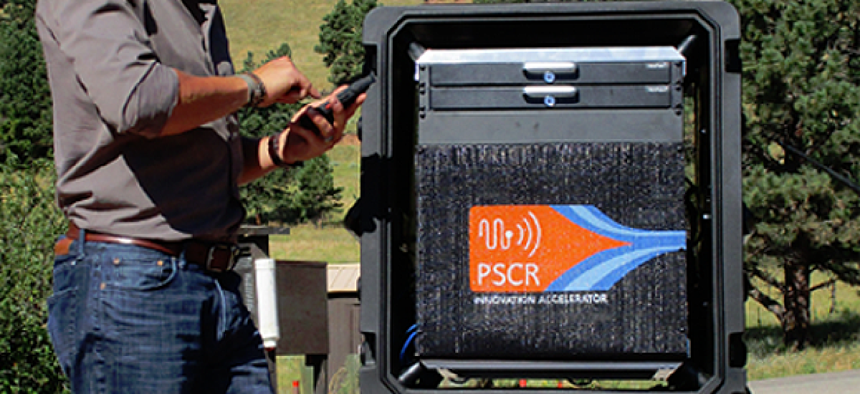NIST develops portable wireless network platform for responders


Connecting state and local government leaders
The Rapidly Deployable Public Safety Research Platform allows first responders to communicate in areas where a nationwide communications network might not be available.
Emergency responders setting up a mobile communication network can spend hours configuring a typical cell on wheels system, but a new piece of tech from the National Institute of Standards and Technology could be deployed in a matter of minutes and provide the same benefits, according to people involved with the project.
Time is critical to first responders and emergency personnel, the target audience for this NIST technology. Rural areas, urban canyons and bad weather can cause problems for both LTE phones and the land mobile radio (LMR) systems responders use, but the Rapidly Deployable Public Safety Research Platform quickly sets up an independent network that connects these systems.
It allows more than 200 devices -- cell phones, Wi-Fi connections, data terminals and LMRs -- to communicate text, voice, video and data.
The device is about the size of a filing cabinet and is meant to be used when a nationwide network is unavailable, according to Tracy McElvaney, an engineering supervisor in NIST’s Public Safety Communications Research (PSCR) Division.
The platform was developed through PSCR’s Broadband Consortium, in which more than 70 vendors provided equipment and support to build a rapidly deployable vehicle-borne network system.
“Our role at NIST is not to develop the technology itself, but to integrate the state-of-the-art pieces into a conceptual platform that will help drive the industry to meet public safety needs -- that is, to make portable systems smaller, more robust and with more capabilities,” McElvaney said in a statement.
The device's range is about 2.5 miles, but it can reach a larger community when connected to the internet, satellite or commercial cellular network. In the future it could be possible to integrate sensor and analytics data as well as scale the network when a situation is unfolding, a possibility that PSCR is already testing.
Innovations in advanced communications for public safety is getting a lot of attention right now, with the Department of Homeland Security leading the way on many of the projects (DHS partially funded the rapidly deployable NIST system).
In its second year, DHS’s EMERGE 2016 program is seeking innovative ideas for lightweight, wearable devices for first responders. And DHS recently released an open source version of a web-based communication platform that allows teams to communicate during emergencies using mapping technology in combination with environmental data.
NEXT STORY: Carrier landings as smooth as magic carpet rides




